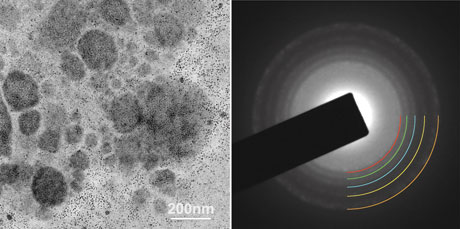Pigeons are famous for their navigational abilities but the means by which they harness environmental cues to find their way around, often in conditions with minimal visual information, were a mystery for many years. Experimental evidence implicated magnetism as the main guiding factor but the nature of the sensory organs that detect the magnetic fields remains speculative. A logical candidate for a magnetoreceptor would be a cell containing the highly magnetic, crystalline, iron-containing mineral magnetite. The other requirement for such a sense organ is that it be part of the nervous system or intimately connecting with it so the information detected can be transmitted directly to the brain.
A report in 2003, that rapidly become dogma, suggested that iron-containing cells found in the upper beaks of pigeons were the proposed receptors. However, a new study published this April in Nature, caused quite a stir when it showed conclusively that this is not the case and the search for the elusive magnetoreceptors must go on.
The international team lead by Australian Dr David Keays at the Institute of Molecular Pathology in Vienna included Dr Jeremy Shaw and Prof. Martin Saunders from the AMMRF at the University of Western Australia (UWA).
Microscopy demonstrated that the iron-containing cells seen in the beaks are in fact macrophages (a type of immune cell) and not the nerve cells that magnetoreceptors would need to be if they are to function as a sensory receptor. By using sophisticated microanalysis in the AMMRF at UWA Dr Shaw and Prof. Saunders showed that the iron inside the cells was actually in the form of ferrihydrite inside iron-storage proteins. Macrophages all over the body contain iron in this form from the breakdown of old red blood cells. The macrophage cells in the beak are no different.
“Our contribution confirmed that the iron in the pigeon beak macrophage cells was just normal cellular iron, composed primarily of ferrihydrite, similar to that found in many other animals. Magnetite is the likely candidate for the magnetic material in a sensory organ because it is the only form of iron that is magnetic enough to respond to tiny differences in the Earth’s relatively weak magnetic fields,” Dr Shaw said.
“It took a team of Australians and Austrians to show that the established dogma in the field was completely wrong. The mystery of how animals detect magnetic fields, has just got more mysterious” said Dr Keays.
The latest results from another team suggest that the inner ear might just be the place to look.

Transmission electron micrograph of the respiratory epithelium from a pigeon beak. The very small black dots in the above image are the iron cores of ferritin. The selected area diffraction pattern below was taken from a similar region and is characteristic of ferrihydrite.
Array
October 22, 2012